Breaking Down the Grade Level Walls of Traditional Phonics Instruction
Dear Katie,I love reading your blog! I’ve used your free Zoo Keeper Writing Strategies with my kinder class and the children really related, always showing me “how many animals (i.e. sounds) they caught” in their words!I’ve taught both 1st and 2nd grades for years, and now am in my seventh year of teaching kindergarten. As many of your letter pattern stories are, of course, geared toward 1st and 2nd, I was wondering if you had some that were more geared more toward kinder?
Also, at what point would you begin introducing the Secret Stories in kinder… after the majority know most of their letters?
Gratefully,
Marian M.
Kindergarten Teacher
I love Marian’s question, as it goes right to the heart of why I created the Secret Stories® in the first place, which was to break down the grade level walls of phonics instruction that limit early learner-access to the code!
Before I answer it specifically, I want to prepare you for the paradigm shift we’re about to take when it comes to what kindergarten can do and when they can do it, and I think these links will help! So here are a couple of guest posts by kindergarten teacher, Kjersti Johnson (post 1 and post 2) along with a couple of eye-opening, kindergarten-related video clips here and here.
So let’s get started by opening up a can of worms about WHY we do WHAT we do WHEN we do it when it comes to the “code” that kids need for reading and writing!
If you really think about it, what are kids supposed to do with just bits and pieces of the reading and writing code? How can you read OR write about your pet mouse with only a third, or even two-thirds of the code? And that’s all most early grade level learners have to work with, given that it takes multiple grade level years to teach it all…. and that’s if they’re on grade level!
The individual letter sounds (which kindergartners spend an entire year learning) provide very little bang for the buck when it comes to using them to reading and writing, as they are actually the least likely sounds that the letters will make when they get together in real words! This makes the brain’s job as a “pattern-making” machine extremely difficult, as it seems that letters are never actually doing what they’re supposed to!
And simply adding the blends and a few digraphs to the mix in first grade doesn’t help all that much, which is why kindergartners and first graders can barely read or write anything! At least not anything that hasn’t been “memorized” (ENTER SIGHT WORDS, STAGE RIGHT!)

And the sight word “parade” begins…
Sight words help compensate for the gross lack of phonics skills at the beginning grade levels, and are often taught in order to meet the required text-level assessments. For early grade teachers, rote memorization of high-frequency sight words can feel like a necessity when considering that the phonics skills kids need to read them aren’t even on their grade level scope and sequence. This is because traditionally, phonics skills are “divvied-out” in bits and pieces across multiple grade level years—from PreK to 2nd.
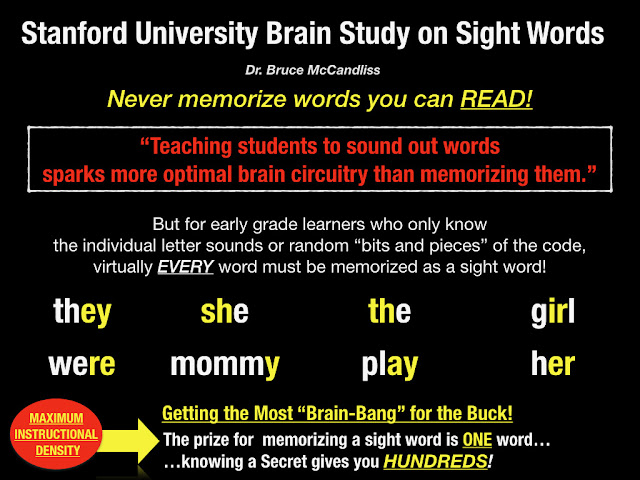 |
| Why Kids Shouldn’t Memorize What They Could READ! |
Moreover, the less skills kids bring to the table, the less value they take away from daily reading and writing experiences in the classroom.
Imagine that you’re a Morse Code operator, just assigned to a naval ship. 
But there’s a problem.
You are only in the first year of a three year Morse Code training program, which means that you barely know even one-third of the code. Yet you are expected to send and receive messages on day one.
You think to yourself……
“How can I possibly be expected to accurately send and receive messages with not even one-third of the code? What about all of the sounds I haven’t learned yet? How will I be able to figure out what the incoming messages say? And worse still, how can I send messages if I don’t know the code for all of the words? Should I just leave those parts blank, or just fill up the page with the parts of the code that I do know? Or maybe I could just forgo what the captain wants me to send and just write what I can spell instead?”
I like it so so much. I really really like the big fun sub a lot!
These are common strategies that beginning (and struggling) learners will also use in order to get around all of the parts of the code that they don’t know or haven’t yet been taught— of which there are many!
A scope and sequence cannot accurately predict which parts of the code learners will need to read their favorite book or to write the stories they want to tell. The /th/ digraph is considered a 1st grade skill by grade level scope and sequence standards, even though /th/ can be found on every line of every page in every book! In fact, kindergartners will encounter the /th/ pattern literally hundreds of times on their very first day! (And don’t even get me started on the letter /y/!) The bottom line is that just like with Morse Code, you need ALL of it to do ANYTHING with it!
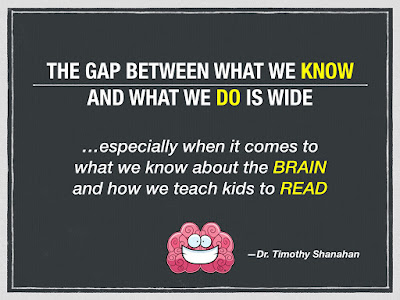 |
| Click here to learn more |
So the burning question is how to provide our earliest grade level learners with access to the “whole” code when it takes an entire for many kids to just learn the alphabet? The answer lies in the brain science. Brain science lights a path straight through the brain’s backdoor via the earlier developing, social and emotional “feeling” networks. By targeting phonics instruction to the affective learning domain, we can bypass areas of inherent early (and struggling) learner weakness (i.e. the higher level, executive processing centers) and tap into alternative areas of strength.
Secret Stories® does this in a variety of ways, beginning with channeling the individual letters and sounds through muscle memory (i.e. body intelligence) for accelerated mastery in just two weeks to two months— and that’s for kinder and PK! (And we’re not just talking the “basic” letter sounds, we’re talking every possible sound that a letter can make by itself, from hard and soft /c/ and /g/, to the long and short vowel sounds, to the positional sounds of /y/, and even /qu/…. and all while they eat their shoes and lick the carpet. (And if you actually teach preK or kinder, then you understand exactly what I mean— Lol!)
During the two week-two month time frame while the individual letter sounds are seeping in via muscle memory, they are also learning about the letters’ “secrets”, (i.e. Secret Stories) which are what they do when they don’t do what they should! The Secrets explain all of the crazy sounds that letters make when they get together, and even some of the strange things they can do when they are by themselves!
Shared as short little stories that are easy to remember and understand, they are ready for immediate use in both reading and writing! And because Secret Stories® aligns letter behavior to learners’ own behavior (by way of already familiar “social and emotional” frameworks) they can easily predict their most and next most likely sound behaviors, just as they could predict the behavior of their own classmates.
 |
| Download the Free Secret Stories® Mini-Poster Sample Pack! |
Shifting early grade reading/ phonics instruction from brain-antagonistic to brain-compatible requires that we FEED the brain, not FIGHT it, and Secret Stories Stories® are its favorite treat! They can (and should!) be given all day long, throughout the entire instructional day—anytime and anywhere they are needed to help read or spell a word. Every Secret you give them is one more “tool” in their tool belt that they can bring to the reading and writing table, so as to bring more value away!
So to answer Marian’s questions…
The Secrets are not bound by the traditional “grade level walls” for phonics instruction that limits learner-access to the code. To share only certain Secrets at certain grade levels would presume that learners at lower grade levels don’t need them, and how could that be true if they are reading and writing across the instructional day beginning in kindergarten? Nor can we possibly say WHICH Secrets a learner will need to read the book he picks from the library or to write a word in a story he wants to tell.
Like the Morse Code operators, kids need ALL of the code, so NEVER wait to share a Secret!
 |
| A “Backdoor Delivery System” for Accelerated Skill Access |
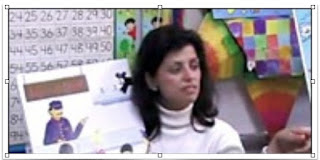 |
Never Miss a Secret! Subscribe to the Newsletter! |
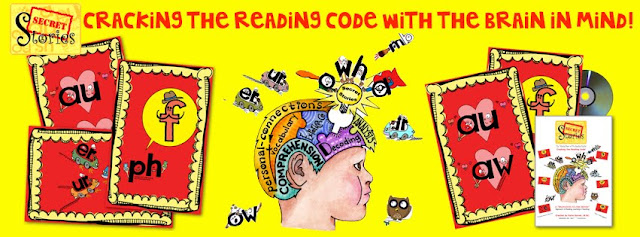 |
|||
|
Comments:
|






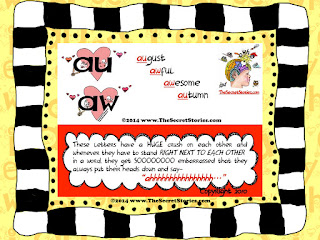
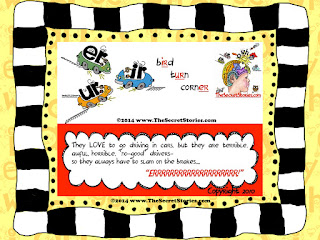

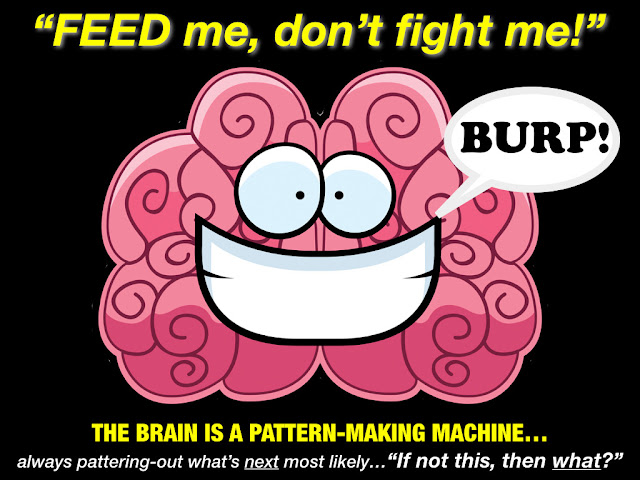








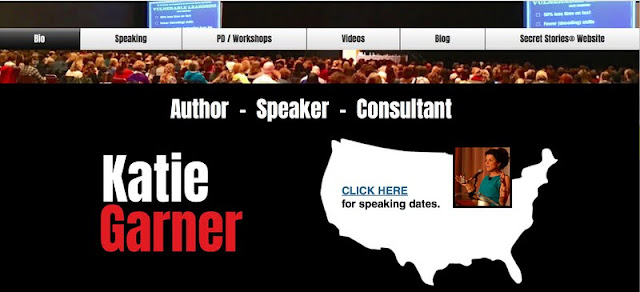
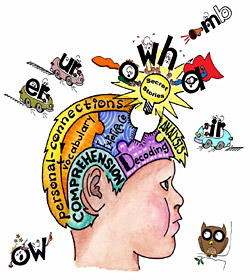










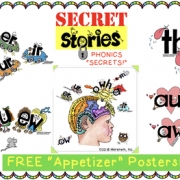
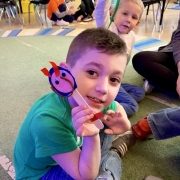

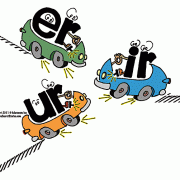
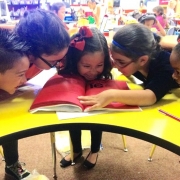 Secret Stories® Phonics Guided Reading
Secret Stories® Phonics Guided Reading
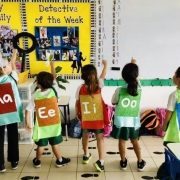
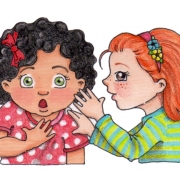




Hi Katie
I started using some of the secret stories in my classroom this year and have been amazed at how quickly my students picked up the secrets, will incorporate them all into my classroom next year for sure. Thanks for making learning fun.
I just started using secret stories with my class. They really enjoy them and are remembering the secrets!
I have been using Secret Stories with my KinderBears for a loooong time! I love to watch my kids write and use the Stories. It is great to "see" the thinking going on when they are writing.
The Porta Pics Pack would be a great addition to the Secret Stories we use in my kinder class.
I just started using the Secret Stories with my daughter. She loves them! The Porta Pics Pack would be great to have for her! :)
Hi Katie! I bought Secret Stories in the middle of the year and started using them with my kinders immediately. I wasn't sure they would get them but I had my "aha" moment when they did and then started asking me (more like begging me) to tell them another one. They were hooked and so was I!! I couldn't wait to see how it would work from the very beginning of the year and can I just say….WOW! My kinder kids are reading really well and their writing is phenomenal! I love that they know how to hunt for secrets in words if they don't know the word. Then when they use those Secrets they are able to decode it with ease. They know to apply those rules and next sounds if it doesn't sound correct initially. This is hands down the smartest thing I ever invested in. It's easy to use with all level of learners and you can utilize it in a variety of ways in your classroom and every subject. A million times thank you for sharing your secrets and making it so fun for them to learn all the secrets!
Hi! I've only had a chance to use some of the samples, so far but let me tell you my THIRD GRADERS loved them! They will never forget why IR, ER, UR make the ER sound and they love it when we retell the story in phonics class. I can't wait to get a full set of the Secret Stories to use in the future!
I am new to grade 1 and have discovered that the kiddos who struggle with reading need something to attach the sounds to in their brains. Many of my early strugglers don't comprehend letters as sounds, but a bunch of nonsense characters on a page. I have taught the "better" alphabet song, and have taught them about superhero vowels, they know all about sneaky Y and I have told a few of the stories like AW and AU, and they really hooked into them and remembered!!!! I would love to have the rest so they'd be more ready for grade 2- they could reference them during reading! They are awesome!
I have considered buying them many times before but the shipping to Canada is crazy!
I have recently found the "secret stories" info and am wondering if I could use this with a child younger than kindergarten or should I wait until they start kindergarten?
I've used this a little this year, but want to go full throttle next year. I am a little curious about if the book contains an approximate order in which you release the secrets. Thanks!
melindacasas@gmail.com
Love the "secrets" My remedial K students are rocking the superheroes
Hi, Katie! I love the Secret Stories! They have helped my students grow as readers. My littles look forward to hearing new stories, and have sometimes asked to hear a Secret Story instead of reading regular stories at story time. The Secret Stories have helped my students find the letter patterns in words. It makes me smile every day in guided reading when my littles read with extra emphasis on their, "Secret" words. Ex: He chEWs gum. It is hER tURn. (Heavy emphasis on the upper case letters ❤) My littles are super proud of their reading successes, and so am I.
My kinders beg to learn more secrets.
This comment has been removed by the author.
My Kinders love hearing the secret stories and it has definitely helped with their reading and writing. I have Kinders doing 2nd and 3rd grade level reading and writing thanks to this program!
I use some The Secret Stories concepts with a group of students aged from 6-11 who are dyslexic and it is showing great results, it's giving them concepts they can latch on too and remember, I also randomly use parts of the secrets when I sub in various classes…I find it amazing how I can let them onto a secret once and weeks later when I get to sub in the class again they can quote the secret back to me. To me that is the power of Secret Stories, the fact with one teaching of a concept it can permanently stick. I look forward to one day owning the full information pack with all the resources :)
I really want to start this at the beginning of next year. I plan to use as much as I can for what's left of this year.
Congratulations to the winner, and thanks to everyone for the great comments and questions posted- here, on Facebook, and through email! I promise to respond / answer all later today one I hop onto my next plane later this afternoon!
I would love to see some of your kiddos writing! If you ever have a chance to send some pieces, via email, or even want to post them directly to the FaceBook page, that would be awesome!
I would also looooovvveee for you to consider doing a guest post, as well, as given that you've been using the SECRETS for so long, you've probably developed quite a few new ideas, tips, and tricks for kinder!! If you think you would be up for it, shoot me an email at SecretStoriesSession@gmail.com ….. would love to hear from you :)
Just to clarify, the porta-pics are actually a set of 25 placards…. so she would have had enough for herself, plus 24 friends!! Lol!
So glad to hear that she is enjoying them :)
So glad to hear that you've seen such a difference with the SECRETS that you have shared, thus far!
I always encourage teachers as the year winds down (and especially if they are the first or only one using the SECRETS) to go ahead and start "tossing out" as many as you can over the last few weeks, as every ONE that you GIVE them, is one MORE that they will have and be able to "put to use" the following year!
Even if taken as only fun and simple 'stories' and nothing more at the time, having been exposed to them will put a sort of "catcher's mit" in place, so as to draw connections when they ARE ready to use them for a purpose the following year!
That's the great thing about telling the SECRETS…..
YOU have nothing to lose, and THEY have everything to gain :)
That's great to hear! Hope you'll stay in touch and share their progress :)
Thanks so much for your comment, and the Porta-Pics really are a BIG help, and not just in the classroom, but they're the best way to connect students (and parents!) to the SECRETS, at home, as well!
As kids refer to them constantly when reading and writing, it's so helpful to give them constant and easy-access to the sound patterns EVERYWHERE they go, especially for pull-out/ resource students!
I love how you describe in such an easy-to-understand way HOW your kids use the SECRETS as ‘tools’ and the process they go through when doing so! I especially liked what you said about how how your kinders don’t not only look for SECRETS in unknown words they want to decode, but are also easily able to apply their "next (most likely) sounds” when words don’t sound correct initially.
THIS is the reading behavior that I get most excited about, especially with the little ones!!!
While it can seem to teachers not familiar with the SECRETS, that this ability exceeds early-learners' developmental capability, it becomes immediately apparent that knowing the SECRETS gives even the littlest and/or severely struggling learners real power over text… and watching them “wield" that power is where the fun truly beings!
Well, congratulations…. you’re getting them, as you are the winner!!! And as you will quickly see, the SECRETS will (and should) “pop up” ALL DAY LONG, as opposed to during a designated "phonics or reading” time. Once you begin sharing them to explain away what students often perceive as "random inconsistencies,” whether in a student’s name, a word on the Math page directions, a sign in the hallway…. virtually ANY time throughout the instructional (and even recreational!) parts of the day! I hope you’ll touch base with a progress update once you get going, as I’d love a ‘birds-eye’ view into your 3rd grade classroom :)
And congratulations, again!
I’m so glad that you’ve been able to use the ones you have, and I know that shipping to Canada IS extremely expensive! I have been working with the office to try and come up with some way to facilitate easier access to the material for teachers in Canada, but the current conversion rate is so high, there isn’t much that can be done :(
If you have a friend that you visit in the US, perhaps you can have them purchase it for you and then pick it up when you visit, as I know that’s what many of the teachers there are doing. Strangely, it costs almost the same to ship to the UK, Australia, Japan, and even the Middle East!
PS Im contracted for a speaking series that kicks off in Calgary in January 2016. I believe the other events are in Seattle other states in the northwest region. Here is the link, just in case you’re interested….
http://www.vulnerablereaders.ca/Home.html
Great question, and yes! You can most definitely start sharing SECRETS prior to Kinder, although the primary focus with preKinders will be on the music to access motor memory for individual letter sound/skill acquisition.
In addition to repetition with the "The Better Alphabet Song," the musical CD has lots of other mini-musical brainteasers with which to increase learners’ automaticity with the sound skills. From there, as they begin applying the sounds of the letters they notice in words (on signs, menus, night time stories, etc…) the actual “SECRETS" can be shared, so as to explain WHY those letters aren’t "making the sounds they expect!” Sharing SECRETS in-conjunction at the SAME time that learners are acquiring the individual sounds through music encourage them to view text analytically, and actively take-note of what sounds letters are and aren’t making, and WHY!! This is what gets the ball rolling and really sparks their curiosity so as to drive their own instruction :)
Fostering learners' innate drive to "actively question" and "problem-solve” letter sound options in text makes them better THINKERS….. as opposed to just accepting that it “doesn’t make sense!”
"If I only had a nickel…"
Lol! That's the most-asked question of all!
It's so easy to forget that as teachers, we are literally "trained" to think linearly…. although luckily (or not, depending on my principal!) with my own class, when it came to teaching the "code," I don't think that I EVER taught ANYTHING the same way twice…. including the order I taught them!
The best way to explain it is to compare teaching the SECRETS to making a sandwich….
First and foremost, the individual letter sounds are the "bread," and they will be easily and naturally acquired by simply singing that "Better Alphabet Song" (https://www.youtube.com/watch?v=DEDqpd11f7E ) twice a day, every day, for at least two weeks.
And of course, you can't even think about making a sandwich without any MEAT!…. and the Superhero Vowels™ are the MEAT in your sandwich.
And as the vowel sounds are of no use if you don't know whether they are making their LONG or SHORT sound, its a must that Mommy e™ be included, right from the get-go, as well! In addition, of course, to Sneaky Y™ (who's just so darned prevalent (in almost ALL calendar words, before every author's name in books, as well as in our all-time fave words like "mommy, daddy and candy!) that you just HAVE to address him from the start, as well!
Once those SECRETS are out of the way, (I usually end up telling them on DAY I of Kinder, along with the "au/aw" because its August on the calendar!) the blends (which are easily reinforced with the "Beethoven Blends" and all of the other musical exercises) are also worked into our musical exercise fun, in addition to whatever other SECRETS happen to come up!
When I moved up to first grade, my principal requested (since I never knew which SECRETS I would be teaching until I taught them!) that I keep a "movable card" clipped to the current page of my plan book, and on it, I keep a running tally of all of the SECRETS I'd taught….. adding to it as I went.
This actually worked extremely well, as she had the documentation she needed as to which skills had already been covered, and I had an easy way to track the SECRETS I'd already introduced in whole-group (as oftentimes additional were introduced in guided group).
As the kids get so far ahead so fast, it's easy (and more fun!) to remain flexible with their introduction, and base introduction and instruction of the SECRETS around "what's going on" (what sound skills are most needed) within the classroom, and the students will be sure to let you know "what they need, when they need it," as they know that YOU hold all of the SECRETS :)
Yea!! That means you're doing it exactly RIGHT!!
:)
Isn't it just amazing to see what the little guys can do when they are let loose with everything they need…. rather than just the 'bits & pieces!' Please consider trying to capture small moments on video, or even snapshots of their writing, when you get the chance! And as I'd mentioned to one of the posters above, if you're interested, I'd love to have you guest blog and share more :)
Please email if you're interested, and so glad to hear how well your kids are doing! SecretStoriesSession@gmail.com
Oh my gosh, I LOVE that you share the SECRETS when you are substituting with different classes! That is truly the best way to get other teachers to take notice, as the students are ALWAYS the best messengers…. especially the extreme "strugglers!'
That's actually my favorite way for awareness about the SECRETS to spread across a school, although it's often a resource teacher, working with students who are considered to be, based on testing, to be the "lowest of the low."
For these learners, the impact is immediate and extreme, as well as impossible not to notice! Regardless of grade level or language background, these are my absolute FAVORITE with which to share the SECRETS!
What a blessing you are to the many different students with whom you come into contact in your position!
(and as mentioned above, I would love for you to consider doing a guest post about your "adventures" as you share the SECRETS intermittently with weeks between, and at the different grade levels!
Please email me at SecretStoriesSession@gmail.com if you'd be willing to share more :)
Definitely DO!
Every SECRET you share this year is just ONE MORE that they'll be armed with next year!
I apologize, as I somehow missed your comment! Thanks so much for posting it, and I LOVE hearing how your little ones are eating-up the SECRETS in their writing!! Please keep in touch, if you would, as they continue to progress, and I would love to see a pic of some of their writing if you ever have a chance to capture something! You are always welcome to post any pics directly on facebook, or send via email to KatieGarner.Juilliard@gmail.com if easier!
Thanks so much again for sharing this, and I apologize that I missed it the first time :)